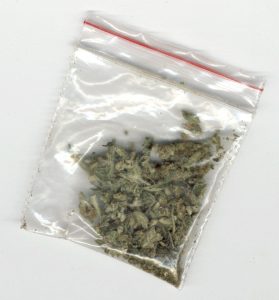 The Appeals Court’s recent decision in Commonwealth v. Martin reversed the denial of the defendant’s motion to suppress evidence seized by the police after they made a warrantless entry into a residence “while chasing the defendant, who [had] fled … during a stop for a civil infraction of marijuana possession.”
The Appeals Court’s recent decision in Commonwealth v. Martin reversed the denial of the defendant’s motion to suppress evidence seized by the police after they made a warrantless entry into a residence “while chasing the defendant, who [had] fled … during a stop for a civil infraction of marijuana possession.”
The basic facts were as follows: two undercover officers “approached a legally parked vehicle in which sat three males. The vehicle was ‘consumed with smoke’ and condensation had formed on the rear windshield. The defendant was seated in the front passenger seat. As the officers approached the vehicle, the defendant opened the door and stepped outside. Smoke emanated from the vehicle, and the officers were struck by a ‘strong’ odor of burnt marijuana. One of the officers [Beliveau] … ordered the defendant to get back inside the vehicle…. ‘[I]n the passenger compartment of th[e] door[]’ [adjacent to the defendant] Beliveau … observed … a copper grinder (commonly used to break up marijuana so that it could be more easily rolled into cigarettes), and cigar wrappers. ‘[G]reen leafy matter’ was observed inside the grinder. The defendant appeared very nervous…. Beliveau asked the passenger [in the back seat] and the defendant for identification” and questioned them about their contact with the criminal justice system. “The passenger responded that he had been arrested for a firearm charge and was on probation…. The defendant responded that he had been arrested…. At that point, which was approximately four minutes from the time the officers approached the vehicle, Beliveau’s partner called for back up. Meanwhile, a woman started approaching the vehicle and asked the officers what was going on…. [T]he defendant identified her as his mother. Within a few minutes, two [other] officers arrived[,] [o]ne of [whom] positioned himself near the defendant.” Beliveau’s partner began a computer check of the defendant’s information and Beliveau began pat frisking the passenger. At that point, “which was seven to eight minutes after Beliveau and his partner first approached the vehicle, the defendant fled. Three officers chased after” him. “The officers yelled for the defendant to stop, but he kept running” and eventually entered the side door of a building forty or fifty feet away, “which was later determined to be his residence. He entered the residence without the use of force or a key. The officers followed the defendant into the residence…. [T]he officers tackled [the defendant]. Once on the ground, without giving the defendant any Miranda warnings, one of the officers asked the defendant why he had run. The defendant responded that ‘he had a firearm’ in his front right pocket. The police retrieved the gun” and arrested the defendant. After he was charged with firearm offenses and a related offense, the defendant moved unsuccessfully to suppress the gun and other evidence. At trial, he was found guilty of two firearm offenses. On appeal, he challenged the denial of his motion to suppress. Continue reading →
 Massachusetts Criminal Lawyer Blog
Massachusetts Criminal Lawyer Blog










